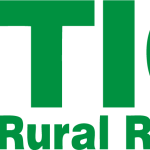 The extra moisture this spring has created some challenges for most farmers, but it may provide some opportunities for those who can use some forages… either in their own livestock operation or if they can sell it. There are two different situations where this might occur… after oat or wheat harvest OR when corn or soybean acres were flooded out and it is too late to replant. The only difference is, in the second situation we need to consider what herbicides might have been applied.
The extra moisture this spring has created some challenges for most farmers, but it may provide some opportunities for those who can use some forages… either in their own livestock operation or if they can sell it. There are two different situations where this might occur… after oat or wheat harvest OR when corn or soybean acres were flooded out and it is too late to replant. The only difference is, in the second situation we need to consider what herbicides might have been applied.
At this time of year, several crops can be planted for silage. An early maturing corn is one possibility if you plant it thick, although the yield might not be very high. A better choice for a late planting might be forage sorghum. Use high grain producing hybrids if available. The best choice of all for short-season silage might be sunflowers. They will survive a light frost and yield well under most conditions.
If you want hay instead of silage, plant teff, sorghum-sudan hybrids, or pearl or foxtail millet. A hay crop exceeding two tons per acre still can be grown if planted soon and rain is timely. Another hay or silage alternative is solid-seeded soybeans. You can also get a couple tons of good forage from taller, full season varieties. Oats planted in early August is another option. They will yield over two tons if moisture and fertility is good and a hard freeze comes a little late.
Also consider planting turnips and oats in late July or early August for fall pasture. You might need to burn down weeds with glyphosate to conserve soil moisture before planting. With a few timely rains in August and September, both oats and turnips produce high quality feed in a short time… and, they are inexpensive to plant.
If replanting flooded out crop ground, check the label of the herbicides used previously. Many will have restrictions or limitations on grazing or feeding the forage grown after their application. Also, unless you used only glyphosate, other herbicides also might injure newly-planted forages.
For instance, many corn herbicides will injure pearl or foxtail millet and teff. But, sudangrass, forage sorghum, or sorghum-sudan hybrids will tolerate moderate levels of atrazine… and safened seed can be used if Dual or Bicep-like herbicides have been applied. Consider drilling bin-run corn for silage or late season pasture, when herbicides eliminate other possibilities.
Soybean herbicides, other than glyphosate, cause even bigger problems for replanting forages. All summer grasses are sensitive to most soybean herbicides. Sunflowers for silage and soybeans for hay or silage are among the few alternatives compatible with soybean herbicide carryover.
Rain has also caused problems for hay producers. If rained on, the feed value of the hay is lowered… and many times, in a rush to put hay up, it gets baled or stacked too wet, which causes mold or heat damage to develop.
Sometimes a bigger problem is the long-term damage to the regrowing plants. Driving over the field when the soil is wet will injure regrowth and can cause soil compaction. But, not driving on the field leaves an even bigger problem with the windrows.
If they stay there until the next cutting, plants underneath will be smothered. This not only lowers yield, it creates a problem where grasses and broadleaf weeds infest the killed strips. These weeds will contaminate all subsequent cuttings. In addition, if rained on windrows are left in the field, they frequently plug your mower when you take the next cutting.
So remove that hay any way you can… bale it, chop it, even blow it back on the ground as mulch. You may need to damage plants by driving on them to turn hay to speed drying and get sunlight to plants underneath. But it will prevent old windrows from ruining future cuttings.
The heavy rains have made life difficult in many ways. But these are a few options for salvaging something from acres that have been flooded or an additional benefit for those with small grains, oats or wheat, in their operation.
Forage Options for a Wet Spring
(Visited 343 times, 1 visits today)

